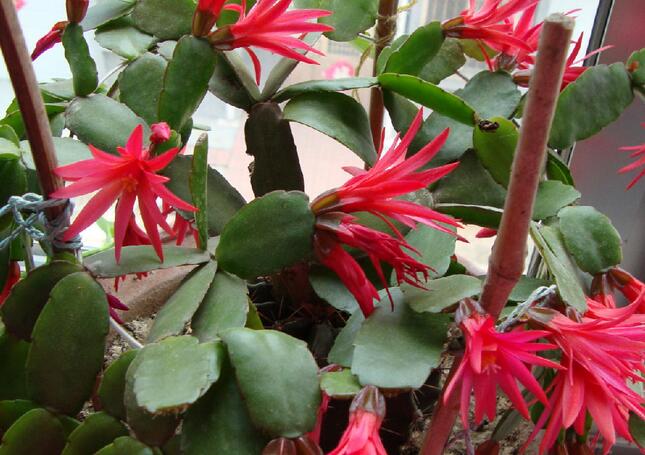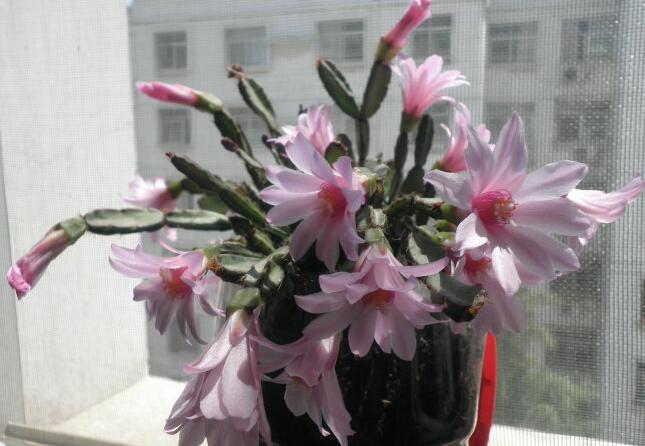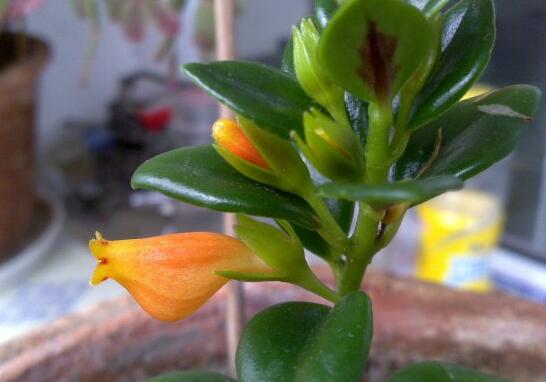How to prevent and control common insect pests in the dance of falling flowers
The dance of falling flowers is a well-growing plant with fresh green leaves and elegant fragrance of flowers. However, once you meet an abominable red spider, this "falling flower dance" will become a "falling flower". What are the common pests in the dance of falling flowers? How to prevent and cure it?

Common pests in the dance of falling flowers:
Red spider
Red spider, alias red leaf mite, belongs to the family Arachnidae. There are three common similar species, which mainly harm many kinds of vegetable crops, such as Solanaceae, Cucurbitaceae, Leguminosae, Liliaceae and so on.
Red spider's morphological characteristics, flower friends should remember, once found, immediately kill!
Morphological characteristics of red spider
Adult mites: 0.42 to 0.52 mm long, body color changes greatly, generally red, pear-shaped, with a long black spot on both sides of the back of the body.
Young mites: nearly round, with 3 pairs.
# p# subtitle # e #
Occurrence characteristics of red spider pests
The overwintering sites of red spider mites are mostly in the soil crevices or under the bark near the host after autumn. The activity began from February to March in the early spring of the following year, and the damage was transferred to the plant from mid-April and late April to early May.
A female mite can lay more than 100 eggs, and adult and nymph mites spread among plants by crawling or silking, causing harm.
Key points of Pest Control of Red Spider in the Dance of falling Flowers
Disinfection measures should be taken to prevent the breeding of insects and mites.
Strengthen pest inspection, control in the damage stage of spot film, and do a good job in checking, wiping, picking and treatment.
Chemical control: avermectin and daben are good agents to kill red spiders. Focus on spraying the back of leaves, floral organs, growing points and other parts of the upper part of the plant.
Insect pests in the dance of falling flowers and their control methods
Common insect pests in the dance of falling flowers: red spiders
Red spider, alias red leaf mite, belongs to the family Arachnidae. There are three common similar species, which mainly harm many kinds of vegetable crops, such as Solanaceae, Cucurbitaceae, Leguminosae, Liliaceae and so on.
Red spider's morphological characteristics, flower friends should remember, once found, immediately kill!
Morphological characteristics of red spider
Adult mites: 0.42 to 0.52 mm long, body color changes greatly, generally red, pear-shaped, with a long black spot on both sides of the back of the body.
Eggs: spherical, smooth, colorless to dark yellow with red.
Young mites: nearly round, with 3 pairs.
There are 4 pairs of nymph mites, and there are obvious massive pigments on the side of the body.
Occurrence characteristics of red spider pests
The overwintering sites of red spider mites are mostly in the soil crevices or under the bark near the host after autumn. The activity began from February to March in the early spring of the following year, and the damage was transferred to the plant from mid-April and late April to early May.
Key points of Pest Control of Red Spider in the Dance of falling Flowers
Strengthen pest inspection, control in the damage stage of spot film, and do a good job in checking, wiping, picking and treatment.
Chemical control: avermectin and daben are good agents to kill red spiders. Focus on spraying the back of leaves, floral organs, growing points and other parts of the upper part of the plant.
How to raise the lily of the valley? Culture methods and matters needing attention of lily of the valley
[FAQ] how to raise the lily of the valley? What are the breeding methods and matters needing attention of lily of the valley?
[expert answers]
The lily of the valley, also known as Junyingcao, valley lily and bluebell grass, is the only species of the genus. Lily of the valley falling flowers flying in the wind looks like snow, so the prairie of the valley of the valley is also known as the "silver paradise". So how is the lily of the valley farmed? Is there any good method in breeding? What matters do you need to pay attention to in breeding lily of the valley?
First, the culture method of the valley of the valley (basic knowledge)
The best propagation time: after the leaves of Lily of the valley withered in autumn, it can also be cultivated before freezing, and it is better to be cultivated in spring.
The best growing soil: Lily of the valley should choose medium or upper-middle fertility, slightly acidic soil, semi-overcast and semi-sunny areas are more suitable.
Growth humidity requirements: the lily of the valley should always keep loose soil and moist soil during the growing period.
The optimum growth temperature of Lily of the valley is 18-22 ℃.
The best growth light: Lily of the valley is suitable for scattered light and semi-overcast environment.
II. Matters needing attention in the culture of lily of the valley
To apply fertilizer:
The main results are as follows: 1. Lily of the valley was fully fermented once in early spring and late autumn, and gradually turned to light after 10-15 days, the room temperature rose to 20 ℃, the bottom temperature was 22 ℃, and increased watering and topdressing. It could blossom after 3 weeks.
2. To manage the lily of the valley, it is necessary to apply sufficient base fertilizer. After sprouting in spring, diluted rotten cake fertilizer should be irrigated every 7-10 days, and liquid fertilizer should be applied once after pedicel, flower shedding and autumn.
Watering essentials:
(2) the lily of the valley likes the moist soil environment and is not tolerant to the early. It is necessary to spray water to the environment frequently to maintain high air humidity. The water used is preferably soft water.
Pruning essentials: Lily of the valley should be cut off the stems and branches as soon as possible after flowering, so that nutrients are concentrated to supply the rhizome.
Pot soil replacement: Lily of the valley potted plants choose fat and large rhizome buds, 4-5 buds per pot, need to change the pot once a year.
Main points of reproduction: individual plant reproduction.
(1) ramet propagation. There are young buds of different sizes on the rhizome. After the aboveground part withered in autumn, the rhizome was dug up, and each terminal bud was cut off with a section of rhizome to plant, and a new plant could be formed.
(2) the hypertrophic buds can blossom in the following spring, and the small ones need to blossom after one year. Seeds washed from red-ripe berries in autumn can be sowed directly on the seedbed in the open field and germinated the following spring.
(3) ramet propagation was carried out in 2 to 3 years; in late autumn, after the aboveground part of the plant withered, the young buds at the end of the rhizome were dug up for ramet planting.
(4) after the ramet of large bud, it blossoms in the next spring, and the small bud blossoms after the next year.
(5) there are flower buds and leaf buds at the top of the underground rhizome of the lily, the flower buds are obtusely conical and fat, and can blossom in the second year; the leaf buds are long conical, pointed and thin, and can only bloom in the third year. The first ramet had better leave 6 buds, including both flower buds and leaf buds, and it is better to plant them on deep ploughing and fertile ground. During the period from autumn to early March, the rhizome can be divided into several segments, each with 4 to 6 buds, the wound smeared with some plant ash or sulfur powder, and the hole is covered with soil of about 5 cm.
(6) if breeding or introduction from a distant place, seeds can be used to propagate, sow in autumn and germinate in the following spring.
Pest control: Lily of the valley did not find diseases and insect pests, generally do not need chemical control, there is a timely prevention and control.
[editor's comments] the lily of the valley should be planted in loam or sandy loam rich in humus, the soil should be loosened in early spring, and the water and fertilizer should be reasonable. The first Agricultural Classic editor has already introduced it for you. I would like to know more information, such as "what is the plant of the orchid?" What are the key cultivation techniques for the cultivation of lily of the valley? "wait, you can follow the planting technology channel of our website.
- Prev

How the dance of falling flowers does not blossom has something to do with the mother plant and cutting or grafting.
The dance of falling flowers grows fresh and green, and exudes a faint fragrance when it is in bloom. If it is a hanging basin culture, hanging in the balcony or the inner room is very pleasing to the eye. But
- Next

Sharing of breeding methods and points for attention of goldfish orchid
Goldfish hanging orchid, also known as goldfish flower, kangaroo orchid, kangaroo flower, hanging goldfish and so on. Perennial herbs of the genus Gesneriaceae, basally semi-woody. Today, the editor of wed114 wedding network brings you the breeding methods and matters needing attention of goldfish hanging orchids. Let's take a look at the details.
Related
- Fuxing push coffee new agricultural production and marketing class: lack of small-scale processing plants
- Jujube rice field leisure farm deep ploughing Yilan for five years to create a space for organic food and play
- Nongyu Farm-A trial of organic papaya for brave women with advanced technology
- Four points for attention in the prevention and control of diseases and insect pests of edible fungi
- How to add nutrient solution to Edible Fungi
- Is there any good way to control edible fungus mites?
- Open Inoculation Technology of Edible Fungi
- Is there any clever way to use fertilizer for edible fungus in winter?
- What agents are used to kill the pathogens of edible fungi in the mushroom shed?
- Rapid drying of Edible Fungi

